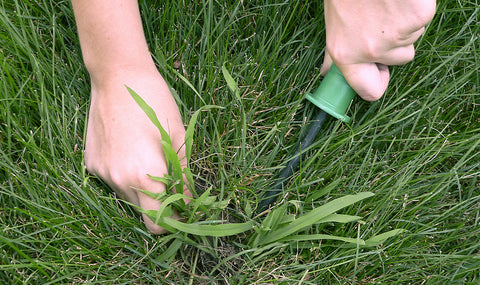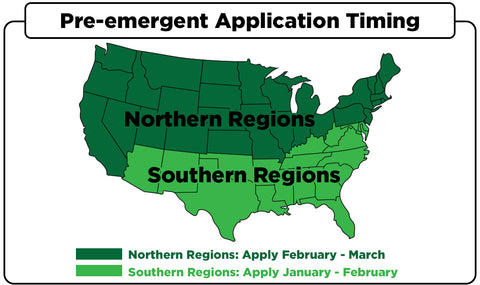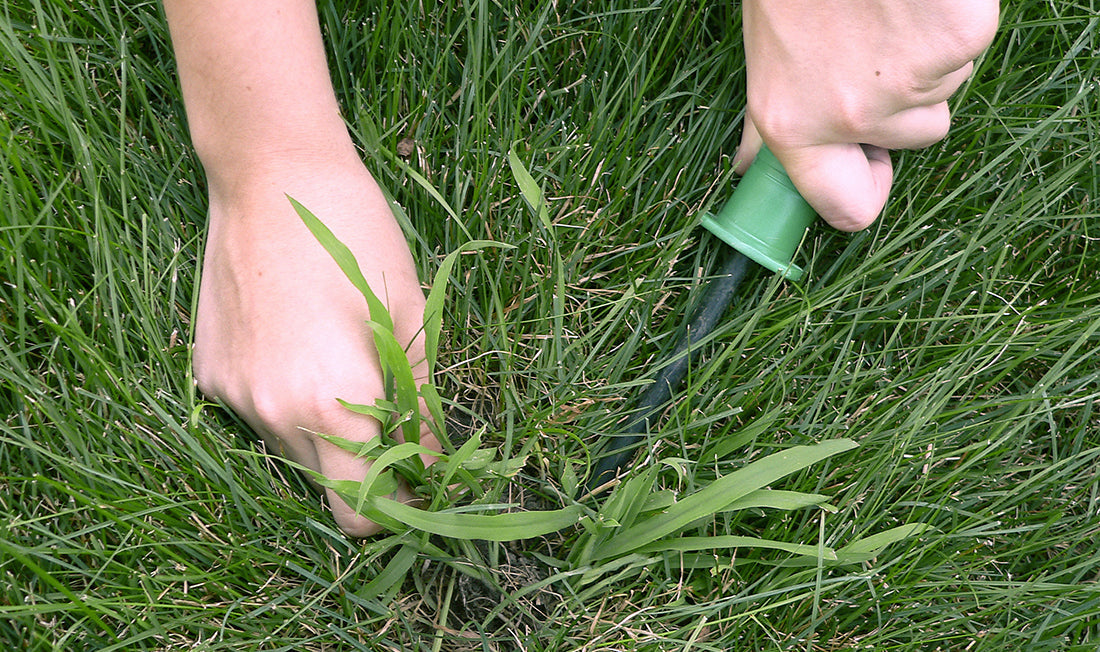Crabgrass is one of the most common grassy weeds that can destroy the appearance of a great lawn. Crabgrass can become very unsightly on closely manicured turfgrasses. There are two forms of control for crabgrass via herbicide applications, pre-emergent and post-emergent.
The Difference Between Pre-emergent and Post-emergent for Crabgrass
Pre-emergent applications are made before crabgrass seed germinates in early spring. The goal is to eradicate crabgrass and not allow any seeds to germinate. Post-emergent control of crabgrasses is applied once the plant produces leaf growth from seed. Regardless, if one applied a pre-emergent weed control, crabgrass can still be present and require post-emergent control.
No pre-emergent is 100% controlling of all targeted weeds. As the effectiveness of the pre-emergent starts to break down in the soil after a 60 to 90-day period, crabgrass can still germinate in masses if a second pre-emergent control is not applied immediately following the 60-to-90-day period that started in late winter or early spring.

Liquid vs. Granular Pre-emergents
Pre-emergent herbicides are available in two forms: liquid and granular products. The most common type that is used by homeowners is in granular form due to the ease of application via rotary spreader. Liquid forms require a boom spraying unit, backpack sprayer, hose attachment, and accurate calibration for best control.
Spillage is a concern when applying with a rotary spreader. When spills occur in a large form, the existing turfgrass can be damaged as well as contaminate the soil, making it sterile. Should spillage occur, remove the material by scooping with a flat shovel and broom and water in the area of contamination immediately. In some instances, the contamination may be so severe that the soil will need to be removed to a depth of 2” – 4” for future turfgrass to grow.
When to Apply Crabgrass Pre-emergents
Timing of pre-emergent weed control products is key. The southern regions of the United States will require an earlier application than regions in the northern part of the United States. Soil temperatures determine when crabgrass seeds will germinate, for example, southern states such as Florida, require earlier pre-emergent applications because soil temperatures rise to a degree to germinate weed seed first. Northern regions come second as soil temperatures reach favorable growing conditions 2 – 4 weeks later than the southern states.

The transition zone can be challenging when the soil temps reach the warmth required to germinate weed seed. However, there are hints when pre-emergent controls should be applied by the blooming and actions of other plants. One method or sign that indicates crabgrass seed is ready to germinate, is forsythia bush flower bloom.
Another way to predict crabgrass germination is called Growing Degree Day (GDD). All plants require exposure to a certain amount of “Growing Degree Days” (GDDs) or heat units to complete their life cycle. Growing degree days are calculated by averaging the daily maximum and minimum temperatures and comparing them to a base temperature.

This formula subtracts the base temperature from the average daily temperature and calculates the number of heat units for that day. There are many online GDD calculators to assist in determining plants’ germination timeframe.
A good timeframe for applying pre-emergent to control crabgrass is normally January to February for southern regions and February to March for northern regions of the United States. Again, soil temperatures over 24 hours when the soil temperatures average 53-55 degrees at a 2-to-4-inch depth for several days consecutively means that crabgrass is set to germinate. However, it is better to apply pre-emergent too early rather than too late.
Crabgrass Pre-emergents
Many products on the market are labeled for controlling crabgrass before germination. Pre-emergents that contain the herbicide chemical Dithiopyr are recommended for controlling crabgrass as well as effectively preventing the growth of 45 grassy and broadleaf weeds, which includes crabgrass. Make sure to review the active ingredients for each product you are considering ensuring you are getting Dithiopyr within the mixture.
Crabgrass Post-emergents
Post-emergent control is often needed even though a pre-emergent was applied. Hand-pulling crabgrass and weeds that germinate after the initial application is a safe way to remove unsightly plants. However, controlling crabgrass sometimes requires herbicide applications that kill unwanted vegetation within your lawn and landscape. Post-emergent products that contain the herbicide chemical Quinclorac display excellent post-control of crabgrass and other weeds. Caution should be practiced when the application of herbicides in liquid form is performed. Only apply when conditions are favorable and per the manufacturer’s recommendations and directions.









